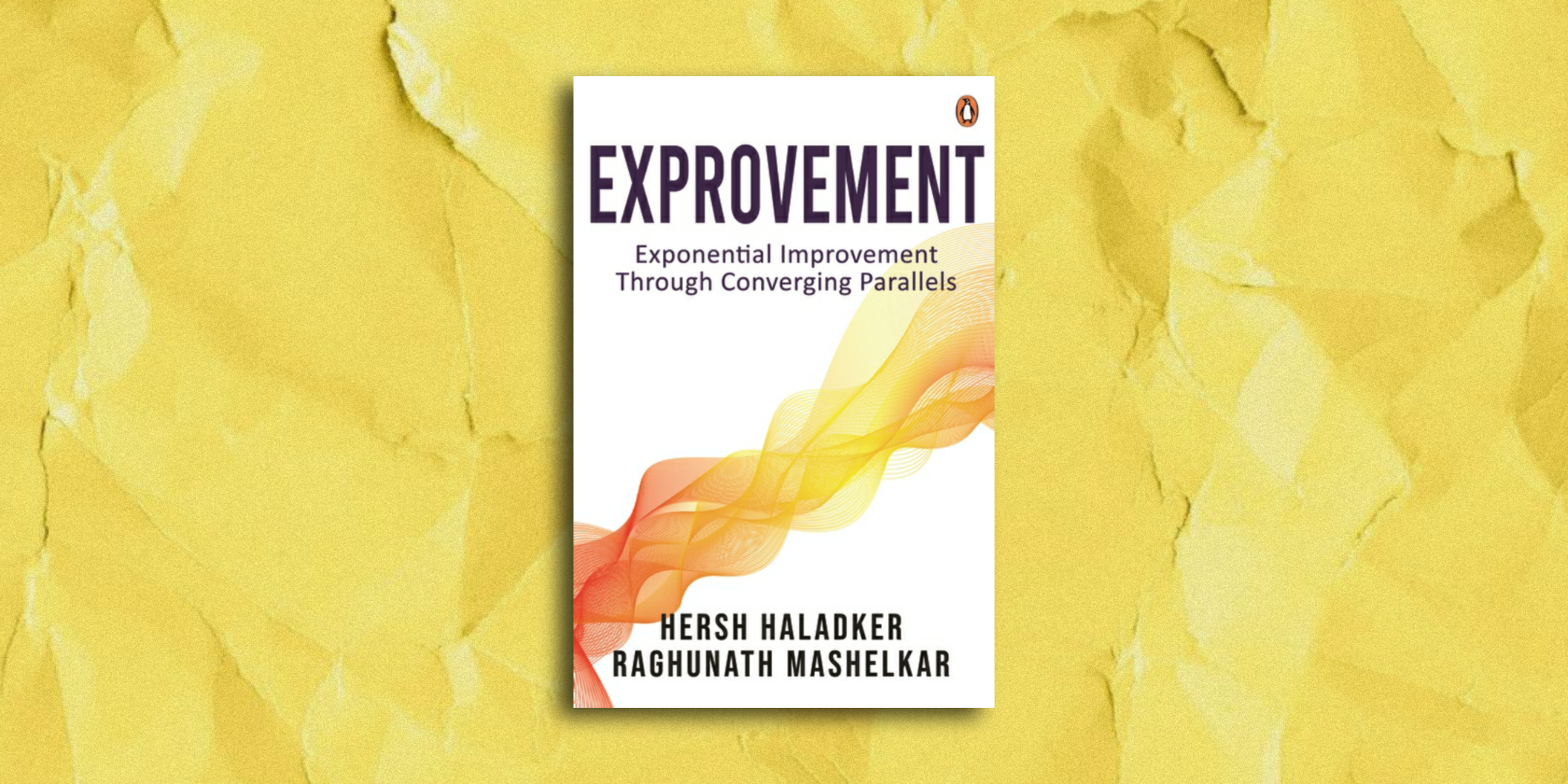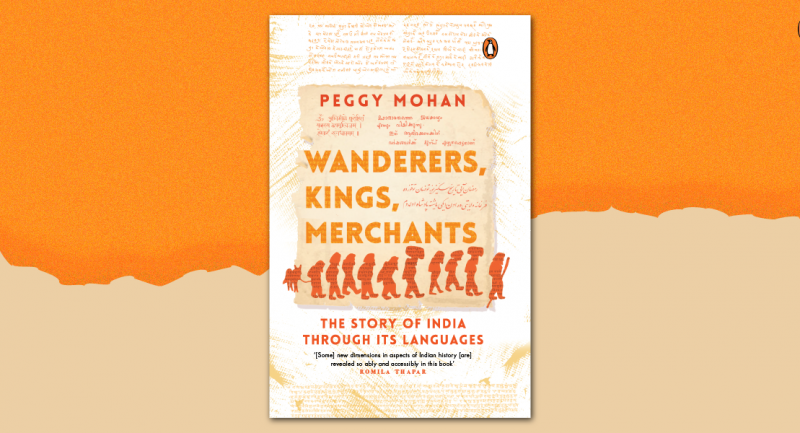
Get ready to be inspired by the exciting journeys of Hersh Haladkar and Raghunath Mashelkar as we uncover the birth of the groundbreaking philosophy of ‘Exprovement’ and its extraordinary potential for personal growth and success. From a childhood fascination with dismantling toys and making surprising connections to profound classroom experiences, unveil the immense potential of drawing parallels that transform into extraordinary results.
Read these captivating stories that offer a glimpse into the author’s mind and gain valuable insights.

***
When I was a child, I was in the habit of taking apart everything I could lay my hands on to examine what was inside.
More often than not, the object of my investigations was a new toy I had been given. So in general, I never really had a lot of toys to play with; just plenty of parts of toys. I distinctly remember a particular incident when I was about ten years old, and my parents—after much pestering and convincing—had finally bought me the expensive remote control toy car I had been eyeing for a while.
Much to their exasperation, this toy became the next victim of my investigations, and try as hard as I could, I simply could not put the toy back together again, once I realized how annoyed they were. Needless to say, the atmosphere at home was tense, and I couldn’t wait to escape to school the next day where (probably as a subconscious attempt to appease my parents) I paid extra attention in each and every class.
When I returned from school, I was excited to see a carpenter at home working on a remodelling project in the kitchen—a carpenter at home meant more tools for me to play with! It was my first introduction to a drill (the manual, not the motorized version) and of course, I had to experiment. While I was drilling a hole through every centimetre mark of my wooden ruler, wondering what to do with it once I had finished, I suddenly remembered the new gadget we had been taught about earlier that day in geometry class at school.
Like the teeth of gears suddenly falling into place perfectly, I was able, in a lightbulb moment, to see a connection between my broken toy car and the compass I had learnt about at school. I rushed to find the motor from my broken car, inserted the shaft of the motor into the ‘0 cm’ hole I had drilled and put it through a piece of paper. I switched on the motor, and my invention was able to automatically draw a circle. Next, I moved it to the ‘1 cm’ hole and drew another automated circle.
I was over the moon! I had just invented the next big thing—I had just automated the compass. That was my first-ever invention, and it drove me to continue the breaking, and in some cases, the making of things. It was only much later in life, on introspection, that I was able to identify my thought process as one of drawing parallels. I had been able to draw a parallel between something from my geometry class and something from my remote-controlled car to create, what was for a grade five student, a new and exponentially improved way of drawing a circle. I had created the electric compass, one of my first personal exprovements.
As I began my professional life, one of the questions born out of this thought process was:
What if parallels could be drawn between the seemingly unrelated to create unparalleled breakthroughs?’
—Hersh Haladkar
There are some ‘wow’ moments that change the course of one’s life. I had one such moment as a young boy in a school. Here is the story.
I was born in a poor family. I did my primary schooling in a municipal school until the seventh standard.
I then had to take admission in a secondary school. My mother could not gather the admission fee for a secondary school in time. I missed the admissions for the top schools in the area. I went to the school where most of the resource-poor children from our area went. But that poor school had rich teachers. One of them was my physics teacher, Mr Narahari Bhave. He did not believe in ‘chalk and talk’ but in seeing, experiencing and learning.
One day he wanted to show us how to find the focal length of a convex lens. He took us out into the sun. He held the lens in one hand and a piece of paper in the other. He moved the lens up and down, and when the brightest spot appeared on the piece of paper, he said the distance between the lens and the paper was the focal length. Then he waited for a few seconds and the paper burnt. When that happened, for some reason, he turned to me and said, ‘If you can focus your energies like this, you can burn anything, you can achieve anything’. This magical moment did two things for me. First, I said to myself, ‘Science is so powerful—I have to become a scientist.’
Second, it gave me the philosophy of my life—focus, and you can achieve great things.
But as I grew older, I saw a much greater meaning in that experiment. The sun’s rays are parallel and the property of parallel lines is that they never meet. The convex lens makes them converge and meet. That gave me the idea for what I termed as ‘convex lens leadership’, which makes people with divergent views and beliefs meet. Take national leadership, for instance. The nation gets divided on the basis of race, religion, language. A good national leader brings these diverse groups together. I used this analogy while leading research institutions.
The National Chemical Laboratory (NCL) had different divisions, unconnected to each other, like parallel lines. As director of NCL, I provided convex lens leadership to create ‘One NCL’, ‘Team NCL’. I was director general of the Council of Scientific and Industrial Research (CSIR), a chain of forty laboratories, again unconnected to each other, like parallel lines. I provided convex lens leadership to create ‘One CSIR’, ‘Team CSIR’. In fact, the result of this convex lens leadership was so powerful that the CSIR transformation in the 1990s was ranked as being among the top ten achievements of Indian science and technology in the twentieth century.
While engaged in convex lens leadership, my own scientific research led me to explore trans-disciplinary frontiers and has continued to do so for almost four decades. In fact, I brought together several diverse disciplines in my research on stimuli-responsive polymers. When I was invited to give the Danckwerts Memorial oration in London in 1995, I spoke on the emerging paradigm of seamless or borderless engineering science, emphasizing the need to create engineers with borderless minds.
Later, I extended this parallel lines analogy to ideas from diverse domains, which appear completely unrelated, and therefore are like parallel lines. But a ‘convex lens mindset’ makes them converge. And sometimes the result is an astonishing 1+1=11, not just 1+1=2!
In this book, we have focused on the challenge of building a convex lens mindset, which is capable of bringing together the parallel, connecting the seemingly unconnectable. We show how such a convex lens mindset creates the magic of exprovement, going well beyond incremental improvement.
—Raghunath Mashelkar
***
Want to know more? Get your copy of Exprovement today!









